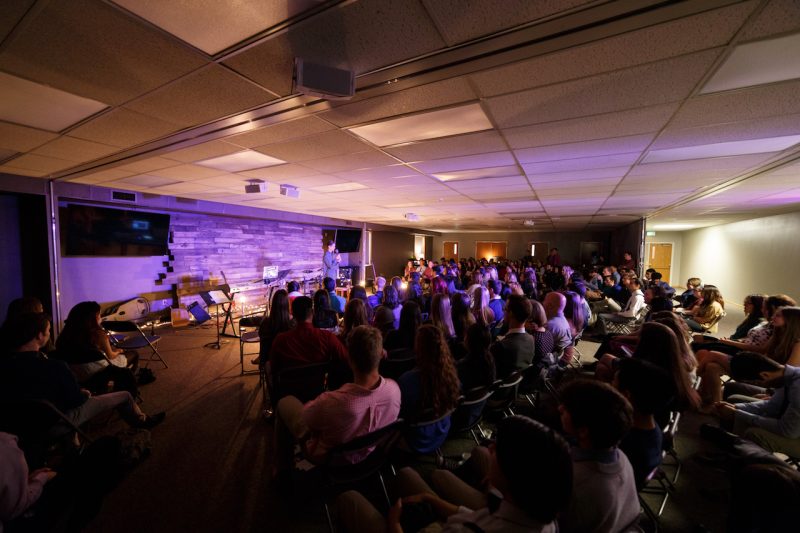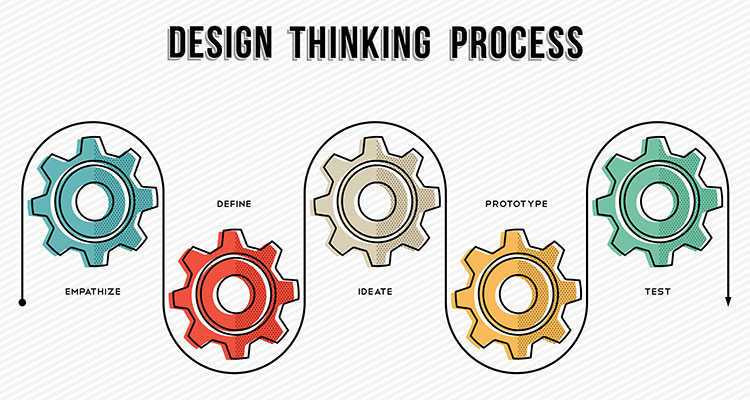Churches as Performing Arts Centers
 When is a church not just a church? For a growing number of churches in the U.S., the answer is when their large venues can double as performing arts centers.
When is a church not just a church? For a growing number of churches in the U.S., the answer is when their large venues can double as performing arts centers.
During my recent interview with one of the largest church architecture firms in the world, principal architect Scott Nelson of HH Architects reflected on this trend. “The [venue] flexibly has become a high priority,” asserts Nelson. In particular, he states that “one of the challenges for the architect is [to] architecturally still make the room feel appropriate when it’s not in full lighting and video mode for a large worship event, especially churches that are using a multi-purpose venue… how do these rooms function when they’re not bathed in technology?”, said Nelson. “For contemporary [church] venues, we’re designing more ‘black-boxes,’ where we hide the ceiling and really create a dark environment for controlled lighting and video.”
Sound familiar? A quick visit to one of the hundreds of new church auditoriums constructed each year in the U.S. reveals a rising trend: They are becoming strikingly similar to performing arts venues. Instead of permanent structures such as organ pipes, choir lofts and large pulpits, churches are increasingly opting for a clean stage and modular stage elements. Even the room itself is morphing into a more flexible environment, with the increased use of light, neutral or even grey tones for the walls. These changes allow for light — or the absence of it — to help set the mood and feel of the venue based on the needs of the service, activity or event.
Churches still need these large venues for other events such as weddings, funerals, and graduations, so it’s easy to see flexibility being a high priority. Potentially, these local houses of worship can offer the use of these multi-purpose venues to third-parties as performing arts facilities. The case can be made for a good return on investment on the rental of these venues, potentially expanding the technology offering significantly.
Similar, But Not the Same
The resemblance to performing arts centers is functionally very similar, but be careful not to assume all church leaders will agree with the terminology. Though churches clearly have services in a venue that includes multiple elements of performance, the production label is sometimes seen as offensive because the church service is seen as sacred.
Of course, every manufacturer and integrator understands the production model; it’s natural to the industry and, as such, it is assumed every market segment understands this truth. But with churches, the term ‘production’ is often seen as secular and not applicable in the sacred. And while some churches refuse to identify their services as ‘productions’ based on the style of the service or ideology of the leadership, the reality is that any event with an audience is a production at some level. Most of the time when working with churches, the music minister (sometimes called a ‘worship pastor’) and/or the tech arts (sometimes called the ‘media pastor’) staff will understand the production model.
A growing number of progressive churches will relish their venue being equated to a performing arts center. Even still, they may not buy into renting out their facilities as full-on production venues. Don’t push this angle too hard, but do reinforce the truth of the flexibility and benefits of their venue for community-focused events. The idea is to open their thinking up to include additional production capabilities that make sense in accomplishing their mission of reaching their communities.
Helpful Examples
Nothing speaks like a real-world example. Taking a small cadre of church leaders to a local performing arts venue — or even another church that’s already adopted the performing arts production model — to show them what’s possible now, what’s easy to add and plant the seed for their long-term building plans. Investing in this sowing of ideas not only will lead to some near-term sales for upgrades and additions, but it also establishes you as a thought leader. You’ll be able to sow those thought seeds over time, investing in the relationship, which is critical in the house of worship market.
It’s still safe to say that a picture is worth a thousand words. Take a look at the pictures below and think through the interesting parallels between the two venues.

New World Symphony Center – photo by WorldRedEye

Church as Performing Arts – photo by VisualWorshiper.com
Think Infrastructure
The upgrade options are almost limitless, but here are some popular suggestions:
- Wireless mics — Many churches are STILL using VHF. Yep. Time for UHF upgrades.
- IEMs — In Ear Monitors are not only popular but highly practical to reduce/eliminate stage volume issues.
- Personal Monitor mixes — Aviom, Hearback, Behringer, etc. are cost-effective options.
- Projection — The flexibility of a clean stage can mean the addition of portable screens as well as ascender screens (coming up out of the floor). Most church projection is under-sized and under-powered anyway, so this is a good reason to make the upgrade.
- Lighting — Where to start? Wash lights, consistent stage lighting, color changers, moving fixtures — the sky is the limit. Churches want to make fast changes and color is easily the best way to do that.
- Comm gear — Clear Com, Telex, etc. all have made this as much art as science over the years. Churches can GREATLY benefit from even a simple two-channel com system.
- Streaming — Even smaller churches are looking for ways to capture and stream live video of services and/or events. A plethora of options exist, so present some to the churches.
- Environmental projection — A feature we’ve already covered, this is only going to gain traction at an exponential rate. Get on the bandwagon and bring churches into this line of thinking.
Dreaming the Future
The trends are real: Performing arts centers are influencing new church venues. The question, of course, is when or if it will become mainstream in churches. I doubt it will hit mainstream, but I do believe based on trends and a two decades of experience in the house of worship market that this will not be a small fractional percentage of churches. And, hey, even if churches don’t go full-tilt-boogie in performing arts, the production technologies from those venues will find their way into many, many churches — so why not help with the easy, obvious transitions while this trend gains momentum?
As always, we at rAVe are dreaming the future based on our experience, our friends in the industry and, of course, the measurable trends we notice. There is no question that this dream is firmly rooted in an ever-expanding reality for the house of worship market. As manufacturers and integrators, are you ready to step up and offer these solutions where you already have great experience from other industries? Dream the future and offer it to churches now!
A former staff member at three mega churches and church technology consultant, Anthony Coppedge has developed a respected reputation as a leader in technical and communications circles within the church marketplace. Reach him at anthony@anthonycoppedge.com or on Twitter at http://www.twitter.com/anthonycoppedge





